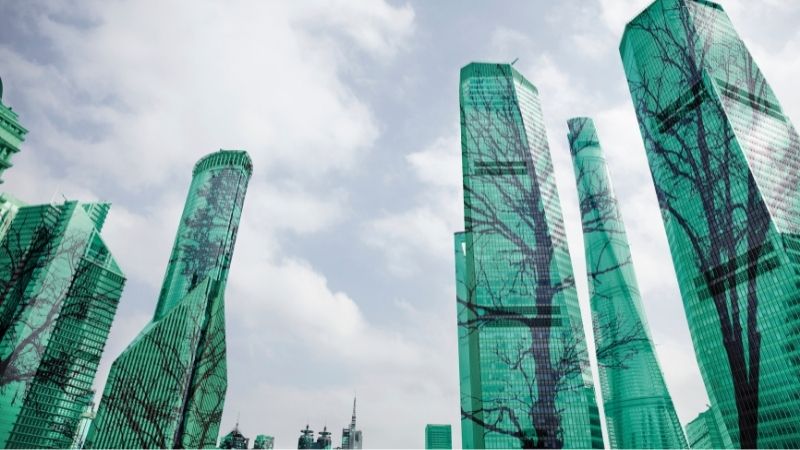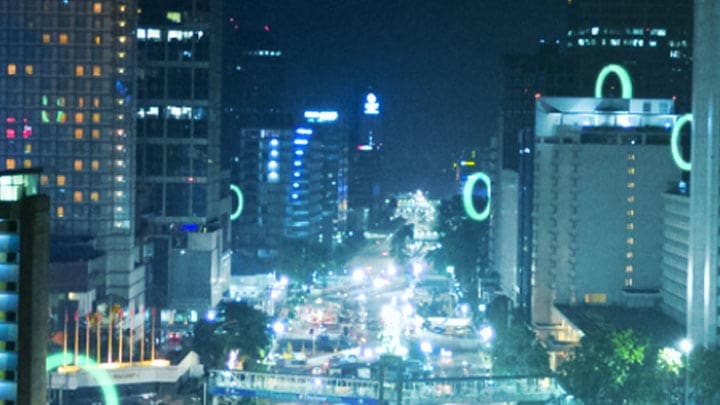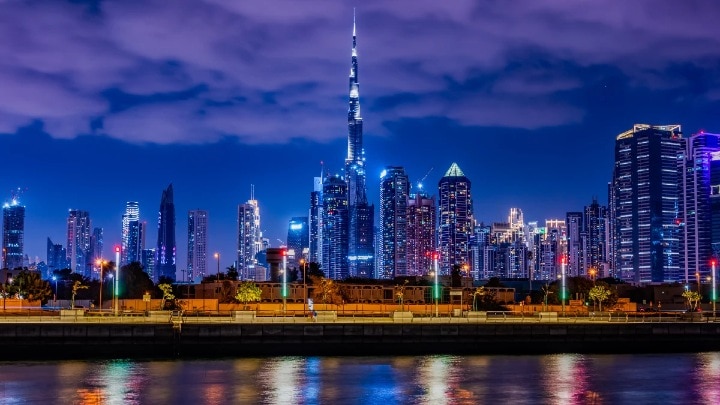May 24, 2021
Signify’s Harsh Chitale talks to Honeywell Building Technologies CEO, Vimal Kapur, about lighting for healthier and more sustainable workplaces
In a post-pandemic world, the technology in our buildings will play an increasingly important role in our health, safety and wellbeing. In December 2020, Signify announced a partnership to bring the benefits of energy-efficient, smart lighting systems and software to Honeywell Building Technologies’ Healthy Buildings solutions. Signify’s connected lighting, human-centric lighting and UV-C disinfection lighting can play a crucial role in delivering healthy, safe and productive workplaces in smart buildings across the globe.
Harsh Chitale, Division Leader Digital Solutions at Signify, recently spoke with Vimal Kapur, CEO Honeywell Building Technologies, in a recorded interview about the companies’ shared projects and vision.

“There are several areas where our lighting systems can act as pillars of the overall healthy building value proposition,” explains Harsh. “Having light that is perfect for a particular task, being able to adjust and personalize it to the individual, or mimic daylight, not only improves occupant comfort, but also drives productivity.
“The second dimension is light that is connected. Such lighting forms a dense grid within a building. When you add sensor capabilities, you can better manage many environmental elements – such as air quality - and feed that data back into the building management system.”
And with employees beginning to return to the office around the world, a healthy and safe workspace is more important than ever. UV-C disinfection lighting is a proven and effective way to inactivate viruses, including SARS-CoV-2, the virus that causes COVID-191. In a laboratory test, Signify’s Philips UV-C disinfection upper air wall mounted luminaires inactivated 99.99% of SARS-COV-2 in the air of a room within 10 minutes. At 20 minutes, the virus was below detectable levels.2 Today’s offices are being transformed to address the challenges of the new normal and also offer the best possible employee experience, with aspects like real time workplace monitoring and integration with automated services, and an increased recognition of the importance of improved air quality.
“We are all acutely sensitive to the need to make workspaces safer. We have been in the UV-C disinfection space for over three decades and recently launched new products for disinfecting air, surfaces and objects. Plus, with lights acting as sensors, you can count people and this helps with social distancing within the office, as you know where crowding is happening and can initiate action. There are so many different dimensions that light can contribute to.”
With an increase in healthy building technology, partnerships like the one between Signify and Honeywell are good for the planet, too.
“Buildings are actually one of the biggest contributors to energy consumption, and hence our carbon footprint,” explains Harsh. “With our integrated offering, we can make buildings much healthier and more energy efficient for customers and bring the carbon footprint significantly lower than we could when working in an isolated manner”.
“As part of the EU Green Deal and EU stimulus packages, there is total of €1.8 trillion of budget and recovery funding available, a significant part of which will be allocated to different governments for sustainable projects that also accelerate economic recovery post pandemic.”
But there are some bottlenecks, too.
“There is definitely a need for more engagement and a need for more capacity across the entire value chain. And there is a need for a solution provider who comes together not just with a technology solution, but with financing and execution capability. In that space, there is an opportunity for companies to engage and partner,” explains Harsh.

Such partnerships can add value beyond the sum of their component parts.
“It is not just about our technologies being complementary, but also about two organizations having a common vision and speaking the same language”.
1 Fluence (UV Dose) Required to Achieve Incremental Log Inactivation of Bacteria, Protozoa, Viruses and Algae Revised, updated and expanded by Adel Haji Malayeri, Madjid Mohseni, Bill Cairns and James R. Bolton. With earlier contributions by Gabriel Chevrefils (2006) and Eric Caron (2006) With peer review by Benoit Barbeau, Harold Wright (1999) and Karl G. Linden
2 According to results obtained from a laboratory test conducted by Innovative Bioanalysis, a CAP, CLIA, AABB Certified Safety Reference Laboratory, in a room with sufficient air circulation. For more information, please refer to the test report available here.
For editorial enquiries:
Signify Global Integrated Communications
Neil Pattie
Tel: + 31 6 15 08 48 17
Email: neil.pattie@signify.com
Signify (Euronext: LIGHT) is the world leader in lighting for professionals, consumers and the Internet of Things. Our Philips products, Interact systems and data-enabled services, deliver business value and transform life in homes, buildings and public spaces. In 2023, we had sales of EUR 6.7 billion, approximately 32,000 employees and a presence in over 70 countries. We unlock the extraordinary potential of light for brighter lives and a better world. We have been in the Dow Jones Sustainability World Index since our IPO for seven consecutive years and have achieved the EcoVadis Platinum rating for four consecutive years, placing Signify in the top one percent of companies assessed. News from Signify can be found in the Newsroom, on X, LinkedIn and Instagram. Information for investors is located on the Investor Relations page.


December 17, 2024
Transforming Dubai’s iconic buildings with connected lighting from Signify